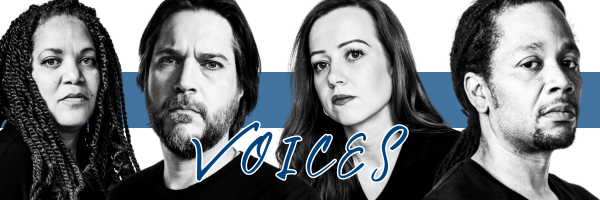
Circumcision, an irreversible surgical procedure that involves removing the foreskin from the tip of the penis, has been mutilating boys and men for centuries. While infant circumcision is more common, adult circumcision has sparked debates across various viewpoints.
This article will explore the costs linked to adult circumcision, shedding light on both the explicit financial aspects and the subtler, hidden circumcision costs.
“Of all circumcisions, it’s estimated that only 1 to 2% of boys need circumcision for medical reasons.”
— John P. Warren, British Journal of Sexual Medicine
In the following sections, we will delve deeper into:
- The direct financial costs associated with adult circumcision.
- The hidden expenses and their impact on individuals’ well-being.
- How underlying financial motivations may influence the practice.
Our objective in this article is to offer a comprehensive understanding of the business side of adult circumcision, the severe life-long consequences of this procedure that is rarely even medically necessary, and to advocate for a more enlightened and ethically sound decision-making process.
The Direct Costs of Adult Circumcision
Before we begin to discuss the costs of adult circumcision, I need to address a common pro-circumcision talking point.
The pro-circumcision crowd tries to say that the cost of not circumcising is greater when as an adult; therefore, it’s better to do it as an infant.
The truth is that circumcision is rarely ever medically necessary at any age. Most American doctors are not trained to understand the male anatomy and the medical establishment at large is complicit in demonizing the foreskin, without any real consideration for the vital functions of the foreskin.
The prepuce, or foreskin, serves as an integral component of male genital anatomy, enveloping and safeguarding the penile glans (tip). It fulfills several critical roles and offers various health advantages, such as:
- Defensive Role: By encasing the glans, the foreskin acts as a protective shield against mechanical harm, foreign particles, and infections. This defense mechanism is especially crucial for young boys, helping prevent urinary tract infections by acting as a barrier to harmful microorganisms.
- Moisturizing Function: Smegma, a natural secretion found under the foreskin, is produced by the accumulation of shed skin cells, oils, and moisture. This secretion maintains the moisture of the glans and ensures the foreskin glides smoothly over it, preventing irritation.
- Sensory Contribution: Rich in nerve endings, the foreskin ranks among the most sensitive regions of the penis. Its sensitivity plays a vital role in enhancing sexual gratification and excitement in many men.
- Immunological Aspect: Research indicates the foreskin has immune-related properties, housing specialized cells that ward off certain infections, thereby lowering the incidence of specific sexually transmitted infections.
- Enhancement of Sexual Experience: The foreskin’s design allows for effortless movement over the glans during intimate moments, minimizing friction and augmenting sexual pleasure. It also contributes to the dynamics of an erection by unfolding to cover the glans fully.
For further reading on the uncircumcised penis, check out our article 6 Things You Need to Know About The Uncircumcised Penis.
Adult circumcision involves significant direct costs that can pose financial challenges for individuals. These expenses encompass surgical fees, which include the surgeon’s charges and the cost of anesthesia.
Additionally, hospital or clinic usage expenses factor into the bill beyond the surgical room, covering the facility’s services during the circumcision process. Circumcision costs include pre- and post-operative care, such as initial consultations, follow-up visits, and procuring necessary medications or supplies. Understanding the role of insurance in covering these expenses is vital. Many expenses incur out-of-pocket charges.
Assigning specific numbers to the costs associated with adult circumcision requires an understanding of the variability inherent in medical procedures. Costs can fluctuate widely based on geographic location, the medical facility chosen, the patient’s specific needs, and the extent of insurance coverage. However, to provide a ballpark figure for understanding:
- Surgical Fees: The surgeon’s fee for an adult circumcision can range from $800 to $3,000. This fee can vary depending on the surgeon’s experience and the complexity of the procedure.
- Anesthesia Costs: Depending on the type of anesthesia used (local vs. general), costs can range from $200 to $1,000.
- Hospital or Clinic Usage: Facility fees for the procedure can add $500 to $2,000 to the overall cost. These fees cover the use of the surgical room and any necessary equipment.
- Pre- and Post-Operative Care: Initial consultations may cost between $100 and $250, while follow-up visits can vary but may amount to similar charges per visit. Medications and care supplies might require an outlay of $50 to $200, depending on the care needed.
The total cost for an adult circumcision could range broadly from $1,650 to $6,450, not accounting for the potential variability in individual circumstances and additional unforeseen expenses.
Hidden Costs of Adult Circumcision
The financial toll of adult circumcision extends beyond the surgery and immediate care. Physical consequences, such as the potential for complications, including infections or reduced sensitivity, can lead to unforeseen expenses related to additional treatments and loss of work.
Moreover, the psychological impact on individuals who may experience regret or trauma post-procedure necessitates consideration of mental health support costs.
For a deeper understanding of the consequences of circumcision, read through the following articles:
- 7 Ways Circumcision Injuries and Trauma Are Underreported
- Types of Circumcision Methods (and The Risks Each Cut Carries)
- 10 Eye-opening Statistics About The Dangers of Circumcision
- Understanding The Risks of Male Circumcision: 4 Reasons Not to Circumcise
- Severed Intimacy: Navigating Circumcision Trauma in The Bedroom
- Circumcision Scars, Bumps, and Lumps (Another Truth They Won’t Tell You)
- 10 Disadvantages of Circumcision and Horrifying Facts
- Circumcision Gone Wrong: Damage, Deformity, Death
When individuals face complications post-circumcision, they may also require ongoing medical attention, specialist consultations, and medication, all contributing to the overall financial burden. In some cases, the emotional toll of regret or dissatisfaction with the procedure can result in therapy or counseling expenses, adding another layer to the financial implications.
Profit Motives Behind Circumcision
The underlying financial drivers warrant a closer examination for a comprehensive understanding of their persistence in modern healthcare practices.
One of the more clandestine practices involves the sale of foreskins to biomedical companies. This transaction is not widely known to the public and raises ethical questions regarding consent and the commercial use of human tissue. The foreskins obtained from circumcisions are a valuable commodity in the biomedical research sector, where they are utilized in a variety of ways, including the development of skin grafts for burn victims, making cosmetic products like anti-aging creams, and in various research, endeavors aiming to understand skin diseases and the general properties of human skin.
The utilization of foreskin in the biomedical industry is a lucrative venture. The cells harvested from the foreskin are known for their proliferative capabilities, making them ideal for generating cultured skin cells in laboratories. This has led to foreskin-derived materials being a sought-after resource, thereby creating a hidden revenue stream that incentivizes medical providers to advocate for the procedure.
Moreover, the financial aspect of circumcision extends beyond the sale of foreskins. Hospitals and medical practitioners also benefit financially from the procedure itself. Circumcision rates, particularly in countries where it is a common practice, contribute significantly to healthcare providers’ incomes. This is compounded by the fact that the decision to circumcise is often made in the newborn stage, where medical advice, cultural norms, and social expectations influence parental consent.
“In 2013, television personality Oprah Winfrey began advertising the virtues of SkinMedica, an anti-wrinkle face cream made from human foreskin fibroblasts that promised to ‘rapidly restore the skin’s barrier and moisture balance.’ SkinMedica claimed that it hasn’t bought a foreskin in twenty years—that just one “donated” foreskin is the gift that keeps on giving.”
— Georganne Chapin, author of “This Penis Business” (Lucid House Publishing, 2024)
Sadly, cultural and social norms sustains the demand for circumcision. This demand indirectly fuels a profitable industry, creating a cycle where financial incentives bolster the continuation of the practice. The cultural embedment of circumcision makes it challenging to critically assess the practice from a purely medical or ethical standpoint, as the financial drivers are intricately woven into the societal fabric that supports its perpetuation.
The discussion surrounding the profit motives behind circumcision invites a broader reflection on the ethical implications of medical practices driven by financial gain. It raises pertinent questions about individuals’ autonomy over their bodies, the transparency of medical practices, and the ethical considerations of using human tissue for commercial purposes.
Embrace Your Wholeness Today: Join the Intactivist Movement
Your body, your choice. Before making a decision that will affect your life and body forever, consider all facets of circumcision. Intact America stands for bodily integrity and informed choice, advocating for the rights of individuals to make educated decisions about their own bodies. We invite you to join us in spreading awareness about the benefits of staying intact and the potential risks associated with adult circumcision. We can shift perceptions, advocate for autonomy, and celebrate the natural body together. Take action with us—educate, empower, and embrace your wholeness. Continue to explore our website to learn more, share your story, or support our cause. Your voice matters in this vital conversation for change.
People Also Ask These Questions About The Cost of Adult Circumcision
What Is the Average Cost of Adult Circumcision?
The cost of adult circumcision can vary widely depending on several factors, including the geographical location, the medical professional performing the procedure, and whether it is done in a hospital or a private clinic. Generally, prices can range from several hundred to a several thousand dollars.
How Much Does Circumcision Cost Without Health Insurance?
Without health insurance, the total cost of adult circumcision typically falls on the individual, which can range from several hundred to a several thousand dollars, as mentioned. This cost often includes the surgical procedure, necessary pre-surgical consultations, and follow-up appointments. Additional fees may arise if complications occur.
Is Circumcision Covered by Health Insurance?
Coverage for adult circumcision varies by insurance provider and plan. In some cases, circumcision is covered when deemed medically necessary and prescribed by a healthcare provider, such as for the treatment of conditions like phimosis or recurrent infections. However, insurance may not cover the costs if the procedure is chosen for cosmetic reasons or personal preference.
Are There Any Additional Costs Associated with Circumcision?
Beyond the base cost of the surgical procedure, additional expenses may include anesthesia, facility fees if the procedure is performed in a hospital, and any necessary medications during recovery. Pre-surgery consultations and follow-up visits may also incur separate charges.






No Comments